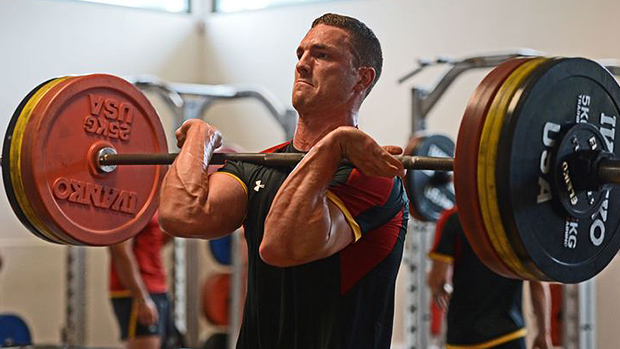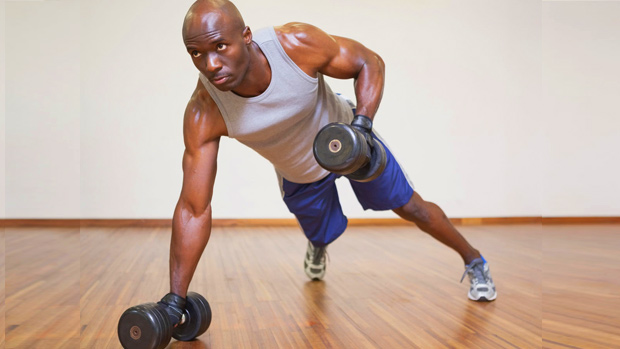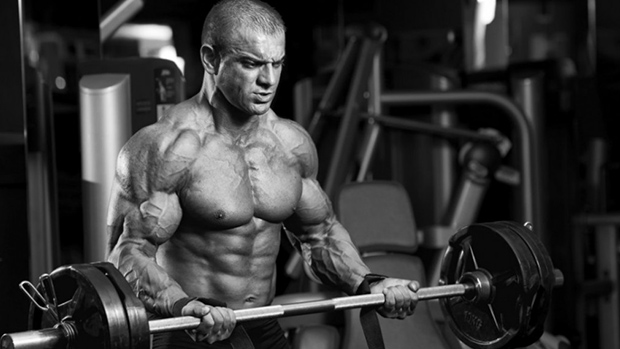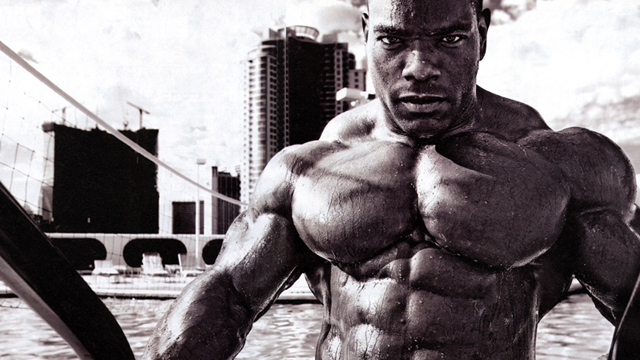Here's what you need to know...
- The classic push-pull split allows you to take advantage of higher frequency and volume. The problem is you'll start to experience local fatigue.
- When your shoulders and triceps are tired from other push movements, it's difficult to put up big weights in subsequent lifts.
- The next generation push-pull split pairs lower body pushing and upper body pulling, and lower body pulling and upper body pushing. This keeps local fatigue of smaller muscle groups from limiting your intensity on the big lifts.
- The next gen split allows you to train the compound lifts with a higher overall frequency, intensity, and volume than you could with the classic push-pull split.
The push-pull training split allows a lifter to take advantage of higher frequency and volume: the push-pull split. Movements are broken up into those muscles involved in pushing and those involved in pulling. It's simple and effective. The traditional push-pull split may look something like this:
Day 1: Push
| Exercise | Sets | Reps | |
|---|---|---|---|
| A1 | Squat Variation | 4 | 5 |
| A2 | Vertical Press Variation | 4 | 5 |
| B1 | Forward Lunge Variation | 3 | 8/side |
| B2 | Horizontal Press Variation | 3 | 6-8 |
| C1 | Knee Extension Variation | 3 | 10 |
| C2 | Single-Arm Horizontal Press Variation | 3 | 10/side |
Day 2: Pull
| Exercise | Sets | Reps | |
|---|---|---|---|
| A1 | Deadlift Variation | 4 | 5 |
| A2 | Vertical Pull Variation | 4 | 5 |
| B1 | Reverse Lunge Variation | 3 | 8/side |
| B2 | Horizontal Pull Variation | 3 | 6-8 |
| C1 | Knee Flexion Variation | 3 | 10 |
| C2 | Single-Arm Horizontal Pull Variation | 3 | 10/side |
Note: If you're not familiar with "vertical" and "horizontal" in this context, they refer to the position of the body. For example, a horizontal press would be a bench press variation and a horizontal pull would be a barbell row. A vertical push would be an overhead pressing exercise and a vertical pull would be a seated row.
This approach allows you to train 4-6 times per week, hitting each muscle group at least twice per week. This provides the higher frequency and volume required for superior gains. While this approach is good, it could be better. With the classic layout above, you'll quickly become victim to specific fatigue, and specific fatigue will force you to utilize a lower intensity, which will compromise results.
Specific fatigue means that a lifter will experience fatigue in specific muscle groups. If you look at example day 1 above, you can see that you'd likely accumulate a significant amount of specific fatigue for the shoulders, triceps, and quads (and from a joint perspective, the elbows). Similarly, day 2 would result in specific fatigue of the forearms, biceps, lats, hamstrings, and wrists.
While specific fatigue, or more accurately, metabolic stresses, can be a positive when it comes to muscle hypertrophy, specific fatigue is also likely to negatively impact the most important factor to strength and size gains: mechanical tension. Mechanical tension is maximized from the use of high intensities – lifting heavy stuff.
Going back to the day 1 example, when your shoulders and triceps are fatigued, it's difficult to put up an appreciable amount of weight during compound pressing variations that create high mechanical tension, such as the bench press or overhead press.
Looking at day 2, you can imagine the difficulty pulling repetition maximums on movements such as any pull-up variation, row variation, or deadlift variation as you'd likely have a pair of forearms that feel like they might rip with your next effort.
While we can agree that specific fatigue is one mechanism responsible for muscular growth, compromising the intensity you can use during high-yield compound movements isn't a good idea when you want to maximize strength and size. In order to still train on a full-body push-pull split, and keep the specific fatigue of the smaller muscle groups from limiting your intensity, try the following revamped, more logical split.

The improved push-pull split will have one day dedicated to lower body pushing and upper body pulling, and the next day will be dedicated to lower body pulling and upper body pushing. It would look like this:
Day 1: Lower Body Push, Upper Body Pull
| Exercise | Sets | Reps | |
|---|---|---|---|
| A1 | Squat Variation | 4 | 5 |
| A2 | Vertical Pull Variation | 4 | 5 |
| B1 | Forward Lunge Variation | 3 | 8/side |
| B2 | Horizontal Pull Variation | 3 | 6-8 |
| C1 | Knee Extension Variation | 3 | 10 |
| C2 | Single Arm Horizontal Pull Variation | 3 | 10/side |
Day 2: Lower Body Pull, Upper Body Push
| Exercise | Sets | Reps | |
|---|---|---|---|
| A1 | Deadlift Variation | 4 | 5 |
| A2 | Vertical Push Variation | 4 | 5 |
| B1 | Reverse Lunge Variation | 3 | 8/side |
| B2 | Horizontal Push Variation | 3 | 6-8 |
| C1 | Knee Flexion Variation | 3 | 10 |
| C2 | Single Arm Horizontal Push Variation | 3 | 10/side |
This format allows you to maximize the benefits of a push-pull split without compromising overall progress. You'll be able to train the compound lifts with a higher overall frequency and volume, and you'll also be able to maintain a high intensity with every session as the specific fatigue will be much less than that of the classic push-pull split.





